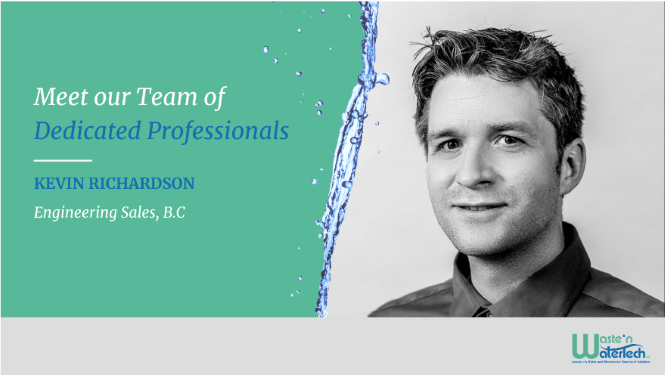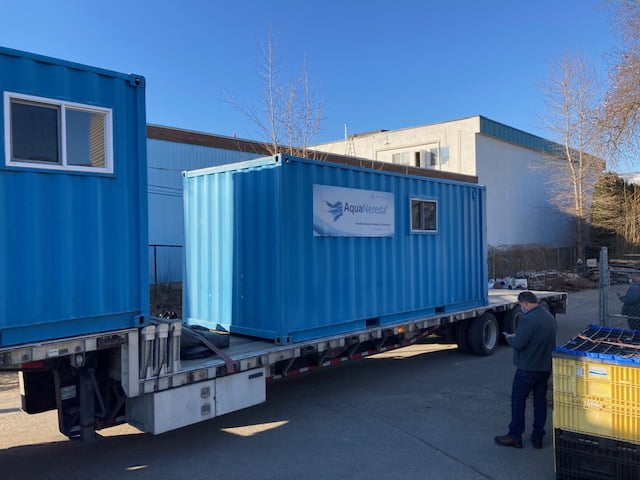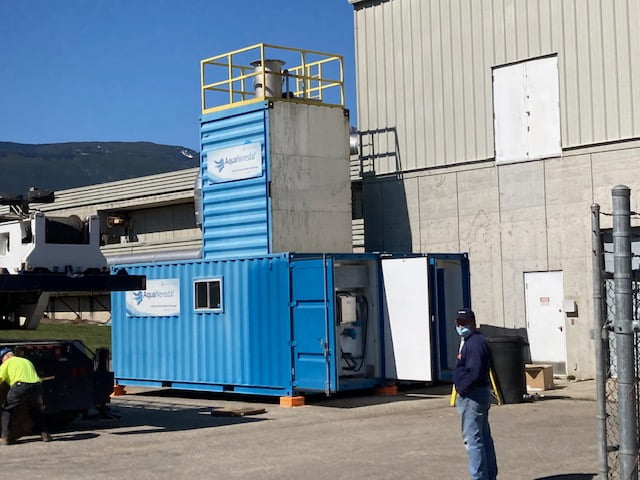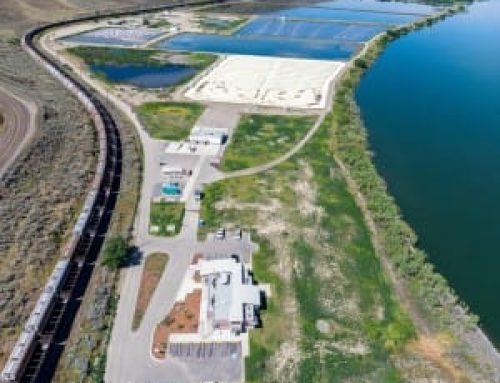Salmon Arm WWTP – AquaNereda® Aerobic Granular Sludge System
Hello, this is Kevin Richardson, I am a recent Mechanical Engineering grad from UBCO and working in the BC Interior as a Sales Engineer with Waste’n WaterTech. On Tuesday April 13, 2021 I was pumped to be a part of history as I watched the assembly of an Aqua-Aerobic Systems AquaNereda® pilot plant at the Salmon Arm WWTP; the first of its kind in Canada!
AquaNereda® is an Aerobic Granular Sludge (AGS) technology recently selected by Global Water Intelligence (GWI) Magazine as the global breakthrough technology of the decade. Starting fifteen years ago in the Netherlands, AGS technology is now in 80+ plants in 20 countries worldwide.
Why Salmon Arm? The City was looking to expand their WWTP capacity and was confronted with looking at developing a new site. The existing plant is a conventional biological nutrient removal (BNR) activated sludge design and the existing site is lacking space for the future expansion. Based on the site selection options evaluation by WSP Engineering and community engagement outcome, it was decided to continue upgrading and expanding the existing wastewater treatment facilities. The AquaNereda® AGS technology was selected for high-level evaluation because this process requires less footprint and allowed for a retrofit within the existing plant area.



AquaNereda® AGS technology benefits include:
• Small footprint
• Reliable and robust process
• Continued BNR
• Achieving regulatory effluent targets including TP with no chemical addition
• Futureproofing more stringent regulatory targets in the years to come
• Operation in cold climates
WSP and the City chose to pilot the technology in part to ensure operation in colder wastewater temperatures. There are Nereda® plants worldwide that have operated below 10 C, and as low as 8 C (similar to Salmon Arm). It was determined to proceed with the piloting as soon as possible. After an agreement was reached with the City, the earliest a pilot was available and could be onsite was April 13th.
Piloting challenges include:
• Finding a location that allowed accessing headworks flow to the pilot
• Disposing of pilot effluent and sludge
• Providing required power
• Shipping seed sludge across the border
• Sending skilled technicians across the border during COVID
• Setting up protocols to replicate various flow conditions.
The pilot is now assembled and set up on site. The acclimation process was started on April 15th, including seeding with AGS sludge; the schedule over the next few months is:
• Acclimate the seed sludge – for a month
• Operate the pilot under annual average flow conditions – for three weeks
• Operate the pilot under max month conditions – for a month
• Operate the pilot under peak wet weather flows – for a week
• Finally, decommission the plant – during the final week
I will be on site regularly during these various operational phases and will provide further updates. I am very excited and honoured to be part of this innovative technology so early in my career!
Kevin






Leave A Comment